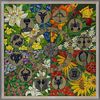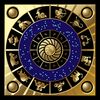Flower EncyclopediaENTER THE WORLD OF FLOWERS |
Other News
Echeveria
Category: Cacti
03 Mar : 13:15
To view pictures click on them




 Esheveriite are among the most commonly grown sukulenti, but few know their real name. Most amateurs call them wrong cacti, and many know them as desert roses, or large Studenińćani Mara.
Esheveriite are among the most commonly grown sukulenti, but few know their real name. Most amateurs call them wrong cacti, and many know them as desert roses, or large Studenińćani Mara.The plant is family Crassulaceae. Native to Mexico. There are lots of blooms in the shape of a bell, from 1 to 5 cm in diameter, thick, covered with wax coating or fluff, like the leaves. In color are pale yellow-green to orange-red on the outside brighter. The leaves are fleshy and have a rosette shape.
Size reaches to 30 cm inhabits a variety of plains and mountain heights, where temperatures are often freezing.
The leaves are gray-green, with different shades.
The wax coating, and slight fuzz on the leaves, protect plants from the solar heat and frost. In bright sunshine wax layer thickens, so the leaves become white-gray or bluish-blue tint, but the tips and edges turn red.
For each species has a characteristic in a certain amount of rosette leaves, so even some of them to fall off due to unfavorable conditions in winter, plant them restored during the warm period.
Most have strong esheverii shortened trunk, but found and bushes.
| desert roses mineral fertilizers balcony room family crassulaceae wax coating |
Comments are turned off for this item0
| desert roses mineral fertilizers balcony room family crassulaceae wax coating |























































